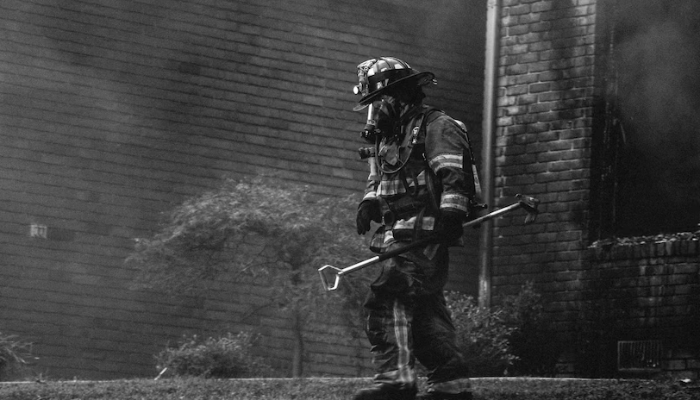Aqueous Film Forming Foam (AFFF), once known as an effective tool in firefighting, is now at the center of a legal storm. Used to combat flammable liquid fires, AFFF contains per- and polyfluoroalkyl substances (PFAS), chemicals associated with health risks like cancer.
As its adverse effects become clearer, a rising tide of lawsuits seeks justice for those affected by exposure. According to a post by AboutLawsuits, nearly 4,500 AFFF lawsuits are pending in the federal court system. Many of the claims involve firefighter cancer lawsuits brought by individuals who claim to have developed cancer from PFAS exposure during their firefighting careers.
AFFF litigation highlights the quest for environmental justice and corporate responsibility in the wake of mounting concerns over PFAS pollution. In this article, we will explore the complex landscape of AFFF lawsuits and the pursuit of environmental justice in the midst of PFAS contamination.
AFFF in Firefighting
Aqueous film-forming foam plays a crucial role in modern firefighting strategies, especially when dealing with flammable liquid fires. Its efficiency lies in its ability to form a film that covers the fuel source, cutting off the oxygen supply and extinguishing the flames.
This makes it particularly valuable in scenarios involving petroleum and other flammable liquids. Fire departments, chemical plants, oil refineries, military facilities, and aviation operations have all utilized AFFF to mitigate hazardous fires effectively.
As reported by Allied Market Research, the firefighting foam market is divided into four segments by type of foam. It includes AFFF, AR-AFFF, synthetic detergent foam, and protein foam. According to the report, the AFFF segment has held the largest share of the global market since 2018.
The Toxic Nature of AFFF
AFFF, once considered a lifesaver, has revealed a darker side with its toxic components, particularly per- and polyfluoroalkyl substances (PFAS). PFAS are manmade compounds that have been shown to persist in both the environment and the human body.
Cancer, liver damage, immune system disturbance, and reproductive difficulties have all been related to these substances. Because of its extensive usage and the possibility of long-term exposure, AFFF’s toxicity becomes increasingly problematic, particularly for firemen.
The Environmental and Health Impacts
Beyond its immediate firefighting applications, AFFF’s impact extends to the environment and public health. PFAS contamination from AFFF has led to concerns about water supply safety, especially in communities adjacent to military bases and industrial sites.
As PFAS accumulates in the body over time, the risks of adverse health effects increase. Bladder cancer, kidney cancer, thyroid disease, and immune system disruption are just a few of the health issues associated with PFAS exposure.
Litigation Surge: Pursuing Accountability
The mounting evidence of AFFF’s hazardous nature has triggered a surge in lawsuits against manufacturers, distributors, and oversight bodies. The AFFF lawsuit alleges negligence, failure to warn, and the concealment of risks associated with AFFF.
Firefighters, both civilian and military, are among the primary plaintiffs, with claims of developing serious health conditions due to prolonged exposure. According to TorHoerman Law, litigation is a powerful step toward holding corporations accountable for their role in exacerbating public health risks.
The Legal Landscape and Settlements
The complexity of AFFF lawsuits is reflected in multidistrict litigation (MDL) involving thousands of cases across multiple states. While some settlements have been reached, others are still waiting for court approval.
According to a recent article by Water Finance & Management, chemical manufacturing company, 3M has recently proposed a settlement of at least $10.3 billion. This proposal is in response to the MDL for cases of PFAS contamination from AFFF. If approved by the court, 3M is expected to pay up to $12.5 billion in settlement over a period of 13 years.
Environmental Justice and Future Outlook
The AFFF lawsuits transcend individual cases, signaling a broader pursuit of environmental justice. Affected individuals and communities are not only seeking compensation but also systemic change to prevent such crises from occurring again.
The lawsuits underscore the importance of stringent regulations, transparent communication, and corporate responsibility. As public awareness grows regarding PFAS contamination, the litigation serves as a call for collective efforts to protect the environment and public health.
Final Thoughts
The mounting AFFF lawsuits, driven by PFAS contamination concerns, reflect a growing demand for environmental justice. Firefighters’ health struggles have catalyzed accountability efforts against corporate negligence.
The litigation underscores the need for transparent regulations, emphasizing collective responsibility to prevent and mitigate chemical risks. These lawsuits extend beyond compensation, urging systemic change to protect public health and the environment.
As settlements are proposed, it’s evident that the legal battles signify a broader call for stringent oversight and corporate responsibility. This echoes the urgency of safeguarding our well-being and the planet.
















Comments